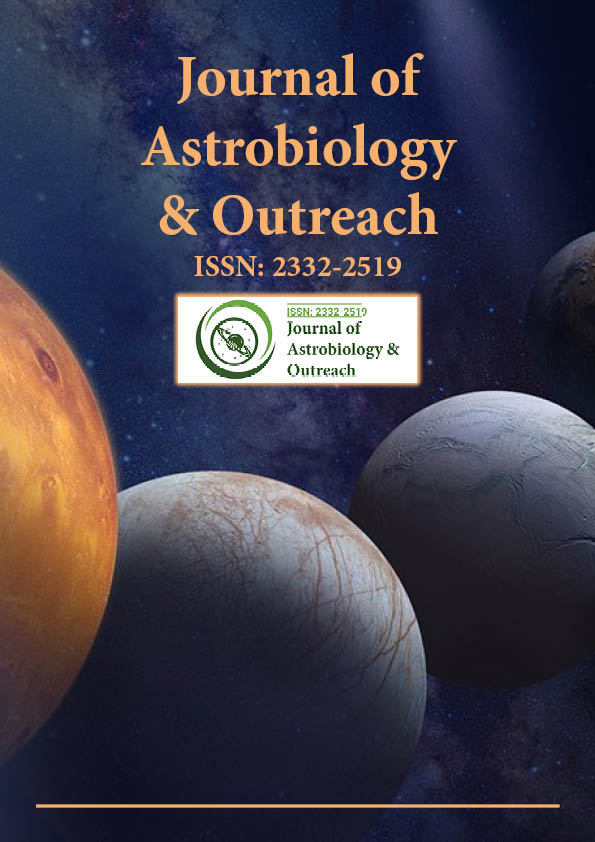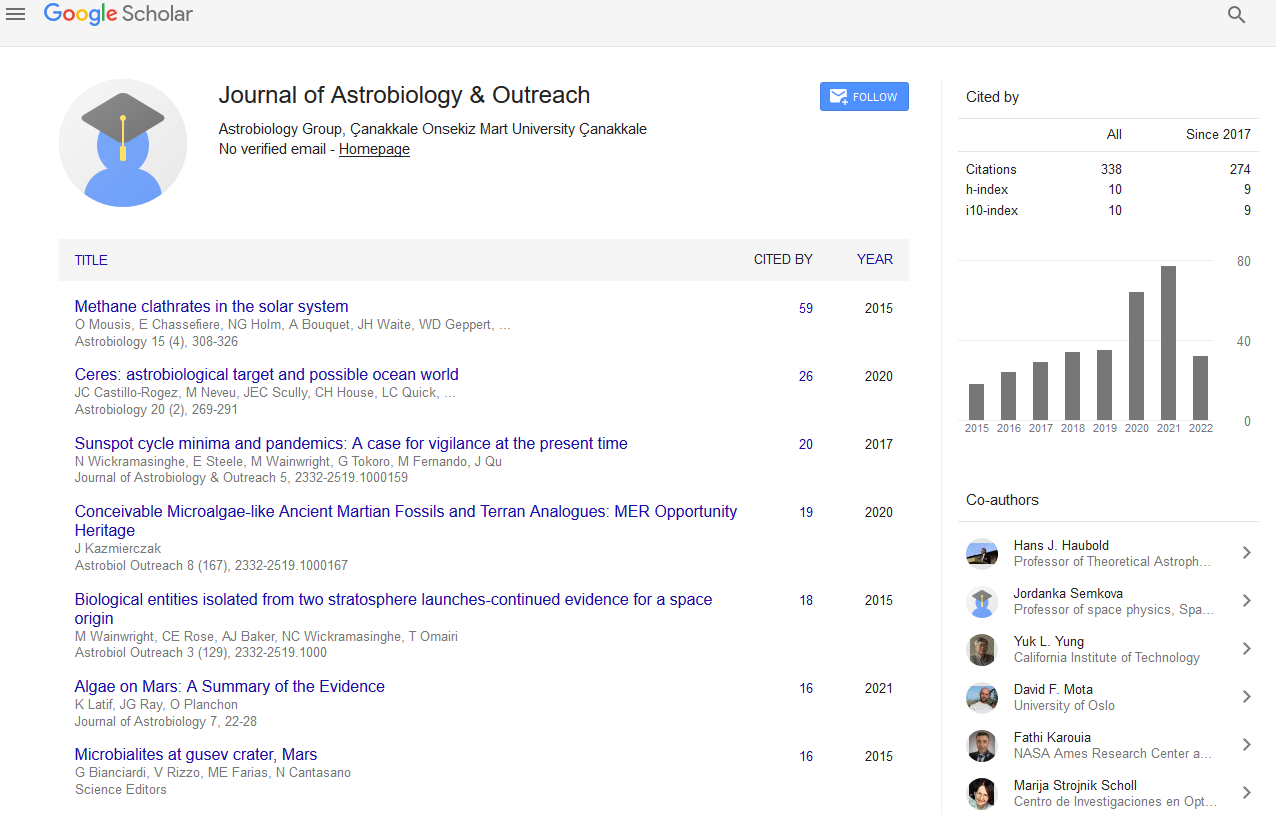Indexed In
- Open J Gate
- Academic Keys
- JournalTOCs
- RefSeek
- Hamdard University
- EBSCO A-Z
- OCLC- WorldCat
- Google Scholar
Useful Links
Share This Page
Journal Flyer

Open Access Journals
- Agri and Aquaculture
- Biochemistry
- Bioinformatics & Systems Biology
- Business & Management
- Chemistry
- Clinical Sciences
- Engineering
- Food & Nutrition
- General Science
- Genetics & Molecular Biology
- Immunology & Microbiology
- Medical Sciences
- Neuroscience & Psychology
- Nursing & Health Care
- Pharmaceutical Sciences
Perspective - (2024) Volume 12, Issue 4
The Formation of Uranus and Neptune: The Role of Giant Impacts in Planetary Evolution
Yuki Nakamura*Received: 29-Nov-2024, Manuscript No. JAO-24-28015; Editor assigned: 02-Dec-2024, Pre QC No. JAO-24-28015 (PQ); Reviewed: 16-Dec-2024, QC No. JAO-24-28015; Revised: 23-Dec-2024, Manuscript No. JAO-24-28015 (R); Published: 30-Dec-2024, DOI: 10.35248/2332-2519.24.12.366
Description
The formation of the ice-covered planets, Uranus and Neptune, remains one of the most interesting and debated topics in planetary science. These two planets share many similarities in terms of composition, size and structure, but their formation processes may differ, especially when considering the possibility of giant impacts during their early evolution. Giant impact scenarios, which involve large-scale collisions between planetary bodies in the early solar system, are thought to play a significant role in forming the final characteristics of planets. The accretion of Uranus and Neptune through such impacts could provide essential insights into the broader processes controlling planetary formation in the outer solar system.
Both Uranus and Neptune are considered ice-covered planets due to their high concentrations of instable compounds such as water, methane and ammonia. Their formation is different from that of the ice-covered planets, Jupiter and Saturn, which have a larger proportion of hydrogen and helium in their atmospheres. Understanding the accretion of Uranus and Neptune is thus essential for understanding the formation of planets with a composition that differs from the more typical ice-covered planets found in the solar system. While traditional models suggest gradual accretion of these planets through a central mass accretion mechanism, recent studies emphasize the potential role of giant impacts in forming the final properties of these ice giants.
Giant impact scenarios propose that large bodies in the early solar system collided with Uranus and Neptune, significantly modifying their internal structure, composition and angular momentum. One of the most compelling aspects of this theory is the idea that such impacts could explain some of the observed anomalies in the properties of these planets. For example, Uranus's unusual axial tilt of approximately 98 degrees has long been a point of contention, with the leading hypothesis being that a giant impact early in its history knocked the planet onto its side. Similarly, the slight differences in the atmospheric compositions of Uranus and Neptune may be partially attributed to the differing impact histories of these planets.
The mechanism of planetary accretion, including the role of giant impacts, are influenced by several factors, such as the mass and velocity of the impactors, the timing of the collisions and the gravitational interactions with other bodies in the solar system. Recent studies have discovered advanced simulations and modeling techniques to explain different impact scenarios and assess their likelihood. These simulations often incorporate various parameters, such as the number of collisions, the mass distribution of the impactors and the effect of the planets’ growing atmospheres. While many of these models suggest that giant impacts played a significant role in forming the ice-covered planets, there is still considerable uncertainty regarding the specific details of the impact events and their long-term effects.
One of the fundamental challenges in understanding the accretion of Uranus and Neptune is the lack of direct observational data. While missions like Voyager 2 have provided valuable information about the planets’ atmospheres, magnetic fields and rings, much of the evidence for their early formation comes from theoretical models and simulations. As a result, the true extent of the role that giant impacts played in the accretion of these planets remains speculative. However, future space missions to the ice-covered planets, such as NASA’s proposed Uranus Orbiter and the European Space Agency’s Neptune mission could provide critical data to refine our understanding of their formation. Direct observations of these planets, including measurements of their atmospheric compositions, magnetic fields and internal structures, will help constrain the models of huge impact scenarios and improve our understanding of their accretion processes.
In conclusion, the accretion of Uranus and Neptune through giant impact scenarios provides an interesting method for exploring the mechanism of planetary formation in the outer solar system. While the exact role of huge impacts in forming these planets remains uncertain, such events likely played a fundamental role in defining their internal structures, atmospheric compositions and angular momenta. By addressing different impact scenarios and including advanced modeling techniques, scientists are gradually discovering the complexities of how the ice-covered planets came to be. As we await future missions to Uranus and Neptune, the data collected will help refine these models and provide deeper insights into the early history of the outer solar system.
Citation: Nakamura Y (2024). The Formation of Uranus and Neptune: The Role of Giant Impacts in Planetary Evolution. J Astrobiol Outreach. 12:366.
Copyright: © 2024 Nakamura Y. This is an open-access article distributed under the terms of the Creative Commons Attribution License, which permits unrestricted use, distribution, and reproduction in any medium, provided the original author and source are credited.

